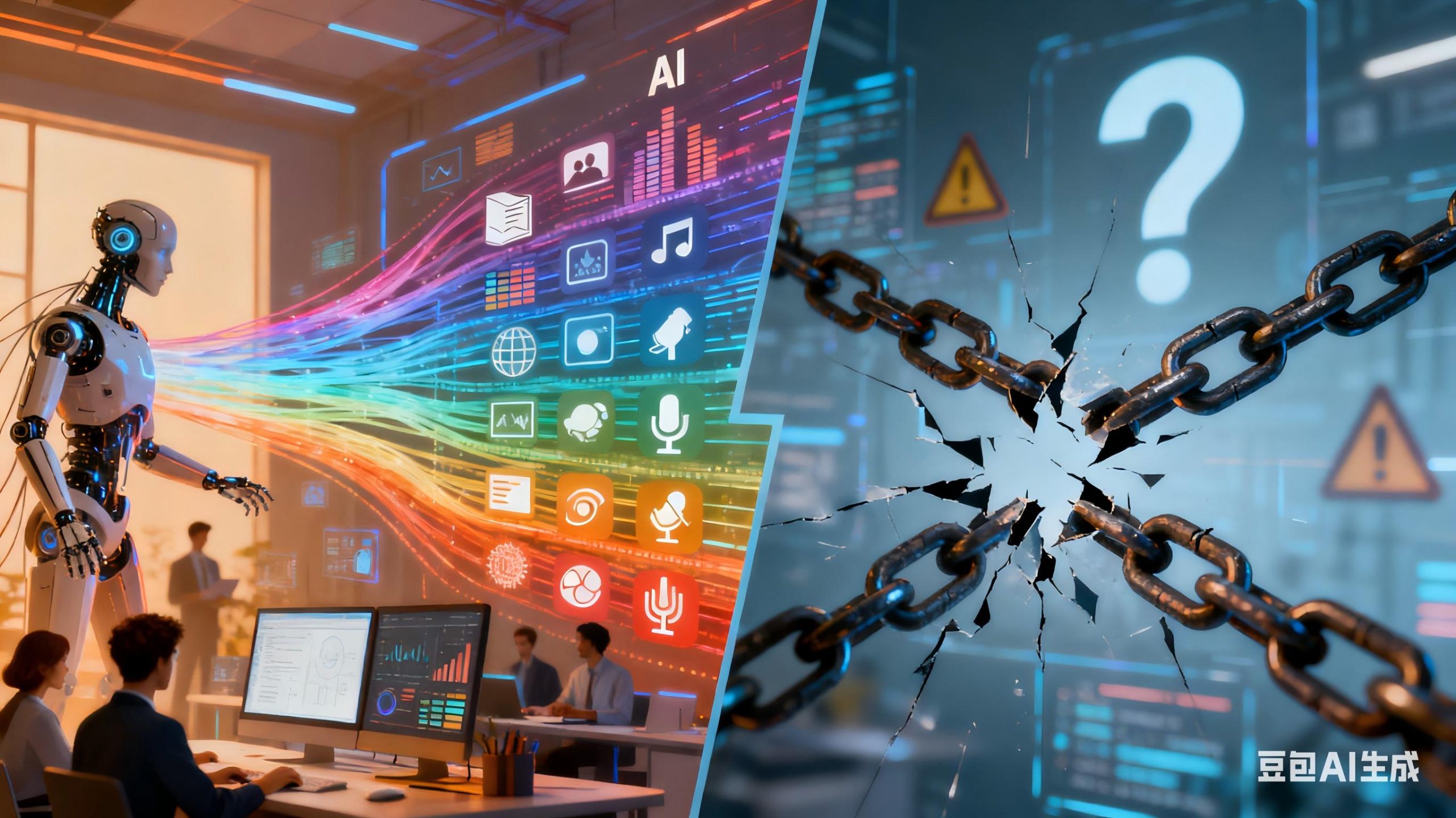Multimodal AI agents, which integrate text, images, and voice, are overcoming the limitations of single-modality systems, enabling complex interaction scenarios. For example, in autonomous driving, agents process camera footage, radar data, and voice commands simultaneously to make holistic decisions. Google’s PaLM-E project demonstrates cross-modal reasoning, answering physics questions (e.g., “Can this object fit through the door?”) by observing environmental photos.
Technical Architecture: Key to Multimodal Fusion
The core of multimodal agents lies in cross-modal encoders and joint decision modules:
- Encoders: Convert text, images, etc., into unified semantic representations (e.g., CLIP model);
- Decision Modules: Integrate multimodal information via reinforcement learning or Transformer architectures to output actions.
Challenges and Solutions
- Data Synchronization: Temporal differences across modalities may cause decision delays. Solutions include temporal alignment algorithms and edge computing optimization.
- Computational Costs: Multimodal models with trillion-scale parameters cost 3–5 times more to train than single-modality models. The industry is exploring lightweight architectures, such as Meta’s Emu model, which reduces computation via staged training.
- Privacy and Security: Multimodal data (e.g., faces, voices) is prone to misuse. Techniques like federated learning and differential privacy are essential for data protection.
Industry Applications
- Healthcare: Agents combine CT scans, medical records, and patient speech to improve early cancer detection accuracy;
- Education: Analyze student expressions, homework text, and interaction voices to dynamically adjust teaching strategies.

Leave a Reply